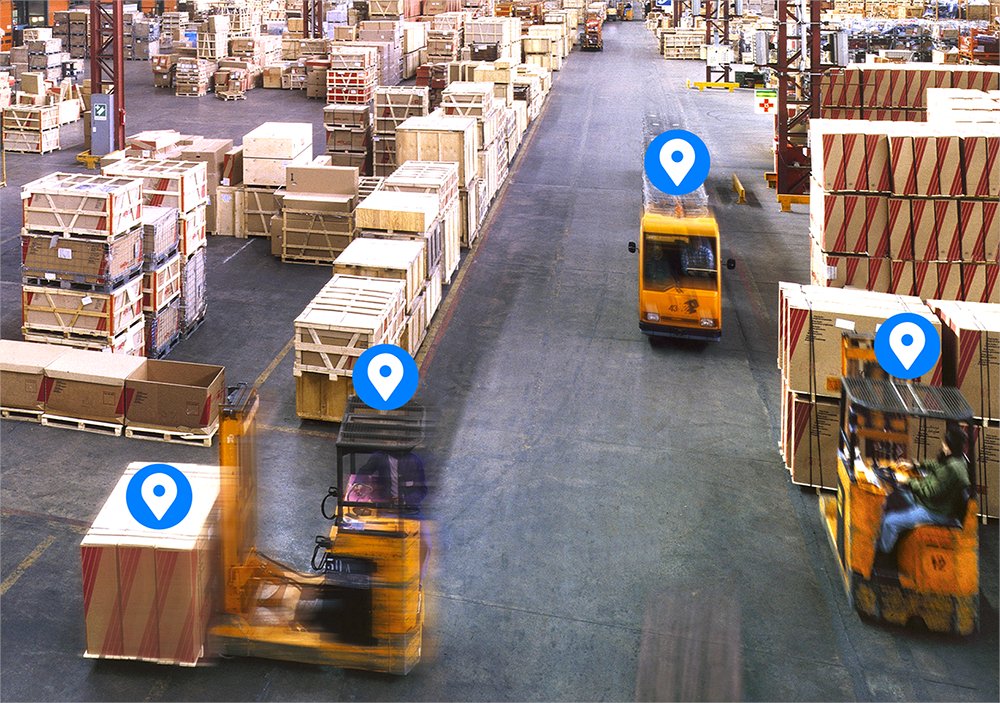RTLS or Real-time locating systems are used to determine an item or person’s location accurately. RTLS, rather than a specific technology, is a collection of methods for locating and managing assets. These systems generate location data and depending on the application the collected data can be used for employee tracking and high-value asset tracking in industries such as manufacturing, mining, healthcare, etc. The components of RTLS consist of a transponder, a receiver, and software to interpret each data. Due to the increasing focus on industry 4.0, smart manufacturing, and technological advancements such as IoT, the demand for RTLS is soaring.
Location Data Ensuring Visibility
Location is also a key element in a comprehensive IoT solution that can have a significant impact on the revenues of any company. It can give businesses complete visibility into their operations, from the movement of people to the monitoring of assets. The analysis of this data can help an organization to derive valuable insights which can lead to more informed decision-making, optimization of processes, and streamlined costs.
Supply Chain Management
Timing is very crucial in the supply chain, location data can make the value chain completely visible to decision-makers helping them streamline operations and increase productivity. This also can ensure predictive analytics to refine performance and boost productivity by identifying lag time and areas for improvement. It can also bring down the operating costs with detailed and optimal transportation routes.
RTLS through data of the assets can help in optimal use and inventory stocking. With this, it enables better asset tracking, and material handling systems, reducing accidents and asset losses. Multiple activities can be monitored at once — supply chain, warehousing, transportation, etc so it can thus streamline processes and increase customer satisfaction.
Manufacturing
In Manufacturing Industry, workers’ data on their location and wearable sensors collect data about their health parameters that can be analyzed against standard parameters to predict behavior patterns and improve their productivity along with preventing workers’ injuries and ensuring safety. With this, by leveraging location data with IoT data, manufacturers can better sense the manufacturing and supply chain processes, improve demand forecasting, and achieve faster time to market.
Healthcare
In the Healthcare industry, RTLS through data collection on medical equipment location and usage and staff and patient interactions can ensure compliance reporting by gathering important data. RTLS data if integrated with other sources like electronic health records and maintenance management systems can be used to give comprehensive information across the healthcare enterprise leading to improvements for healthcare facilities and their patients.
No-Code/ Low Code RTLS Platform
There are some hurdles in the implementation of RTLS in any organization. Apart from the leadership hurdle, some enterprises focus on certain aspects more heavily than others. In this respect, the No-Code/ Low Code RTLS Platform is a programming platform that enables non-technical users to build applications by visual development interface and, dragging and dropping software applications. Such modular and configurable solutions can give flexibility to organizations to configure their rules and alerts according to their requirement and also lead to quick deployment.
Quotients is also engaged with matured startups that are working on this solution helping the above-mentioned as well as other sectors to greatly enhance their functioning through the acceptance and integration of new technologies into their existing systems. To know more about these and for collaboration and partnership opportunities please write to us at open-innovator@quotients.com






